yeah, Prenolepis Imparis have a high mortality rate, so maybe you're not such a rookie
Where’d you hear that?

Where’d you hear that?yeah, Prenolepis Imparis have a high mortality rate, so maybe you're not such a rookie
Where’d you hear that?yeah, Prenolepis Imparis have a high mortality rate, so maybe you're not such a rookie
I took some photos today and yesterday. This colony has slowed down their consumption of insect protein and seem to be carrying many repletes.
I enjoy seeing their large gastors but i think I'm going to leave them alone for a little bit. I've noticed that they really like the stalactites on ceiling of their THA Mini Hearth.
I've even observed them feeding on the stalactites with one holding the cut up mealworm and another feasting on it upside down.
They seem to regulate their need for water by moving either right on the ceiling when i fill up the reservoir, or moving right down to the top of the reservoir when it is low. I have also added 2 nest mates, but they tend to sit there for a long time as they are on the opposite side of the nest from where most of the activity occurs.
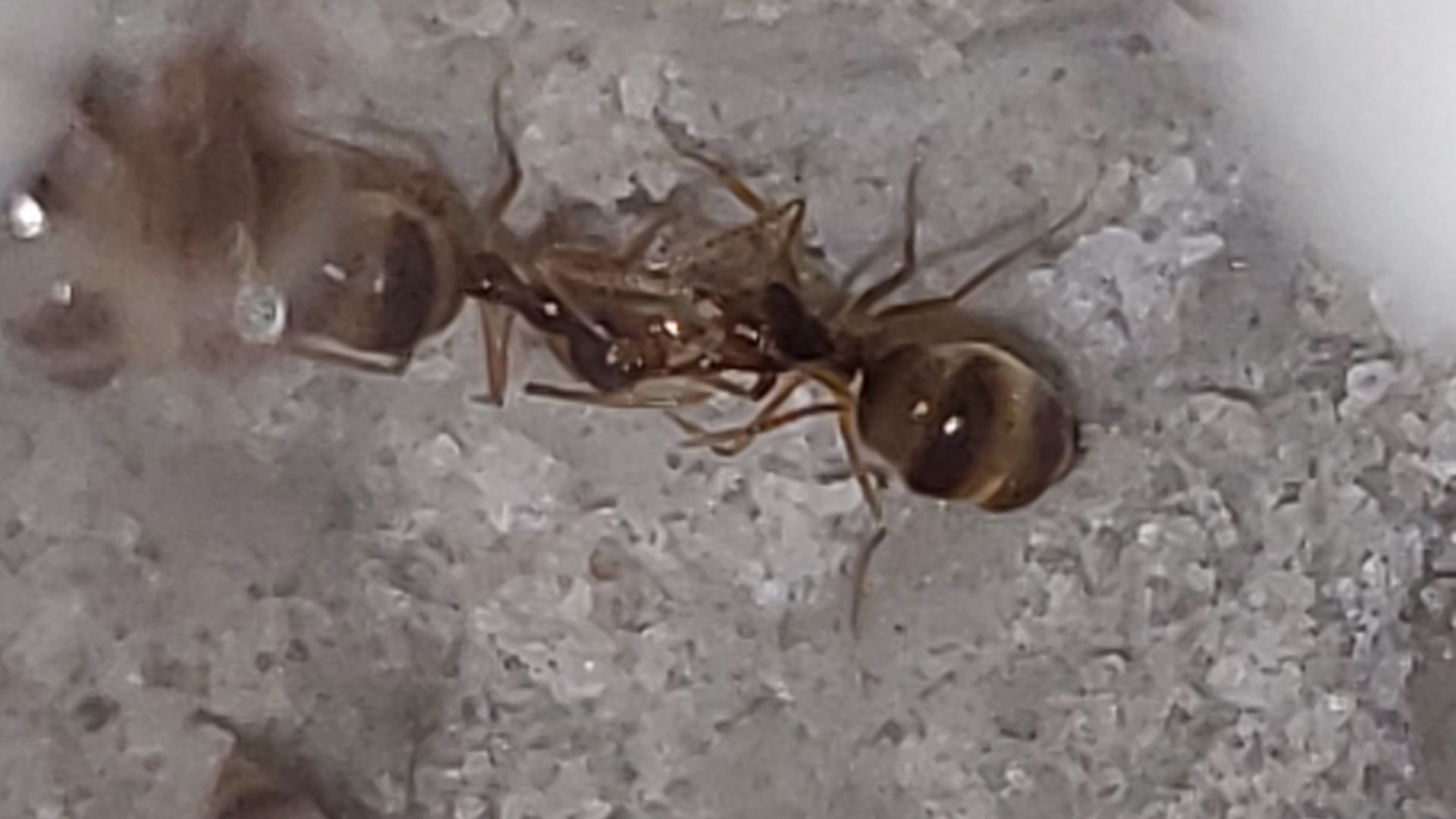
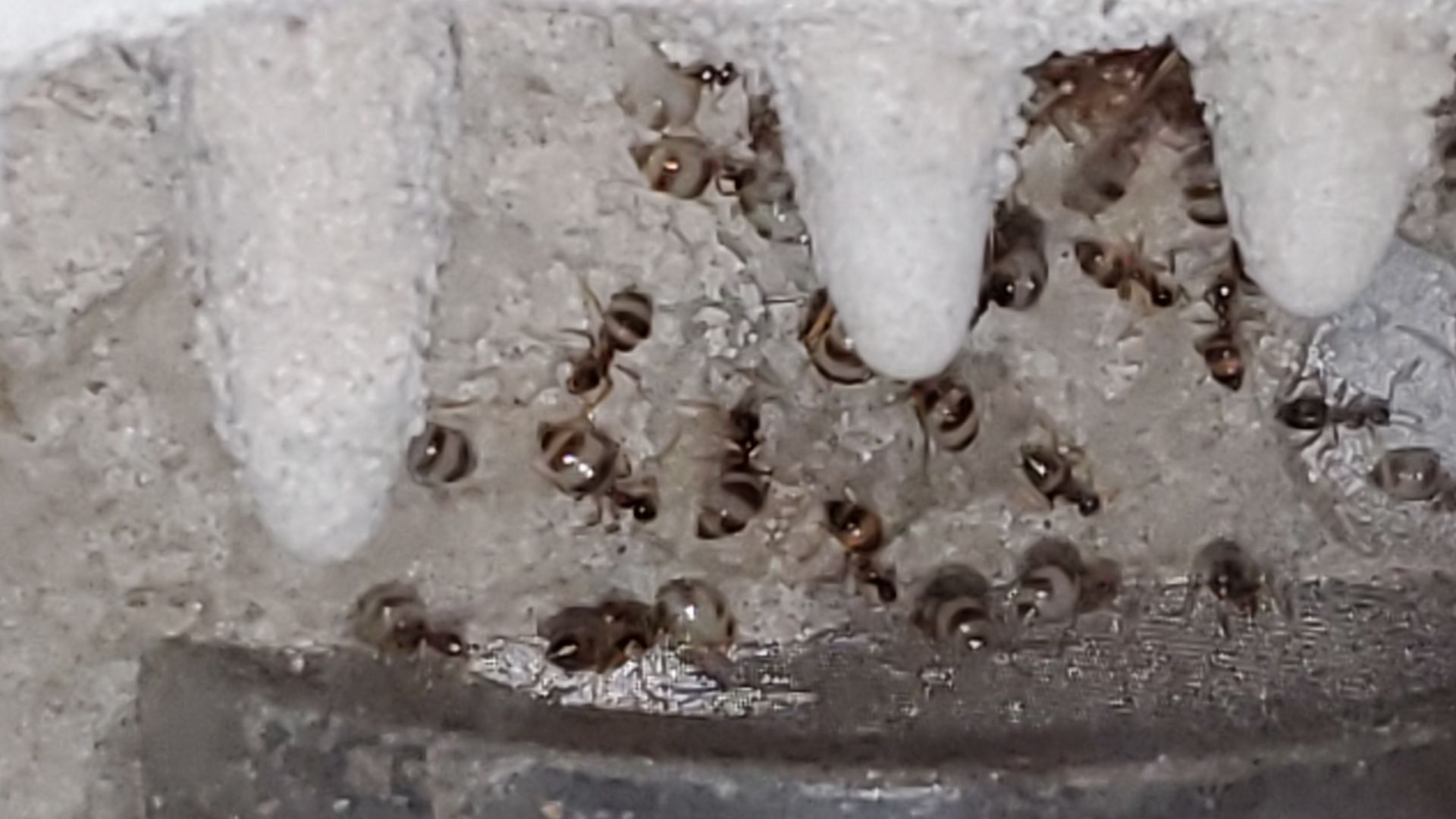
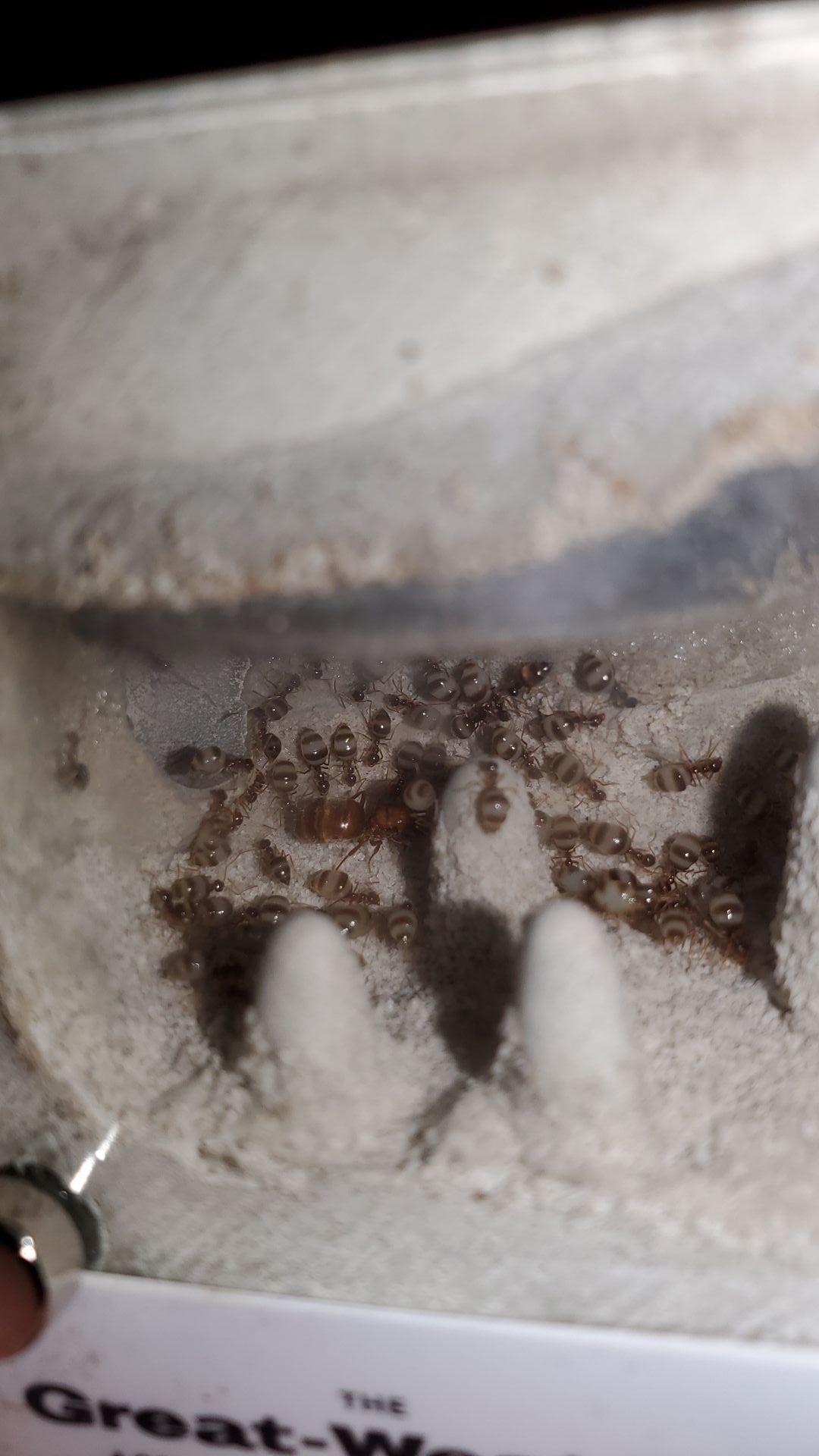
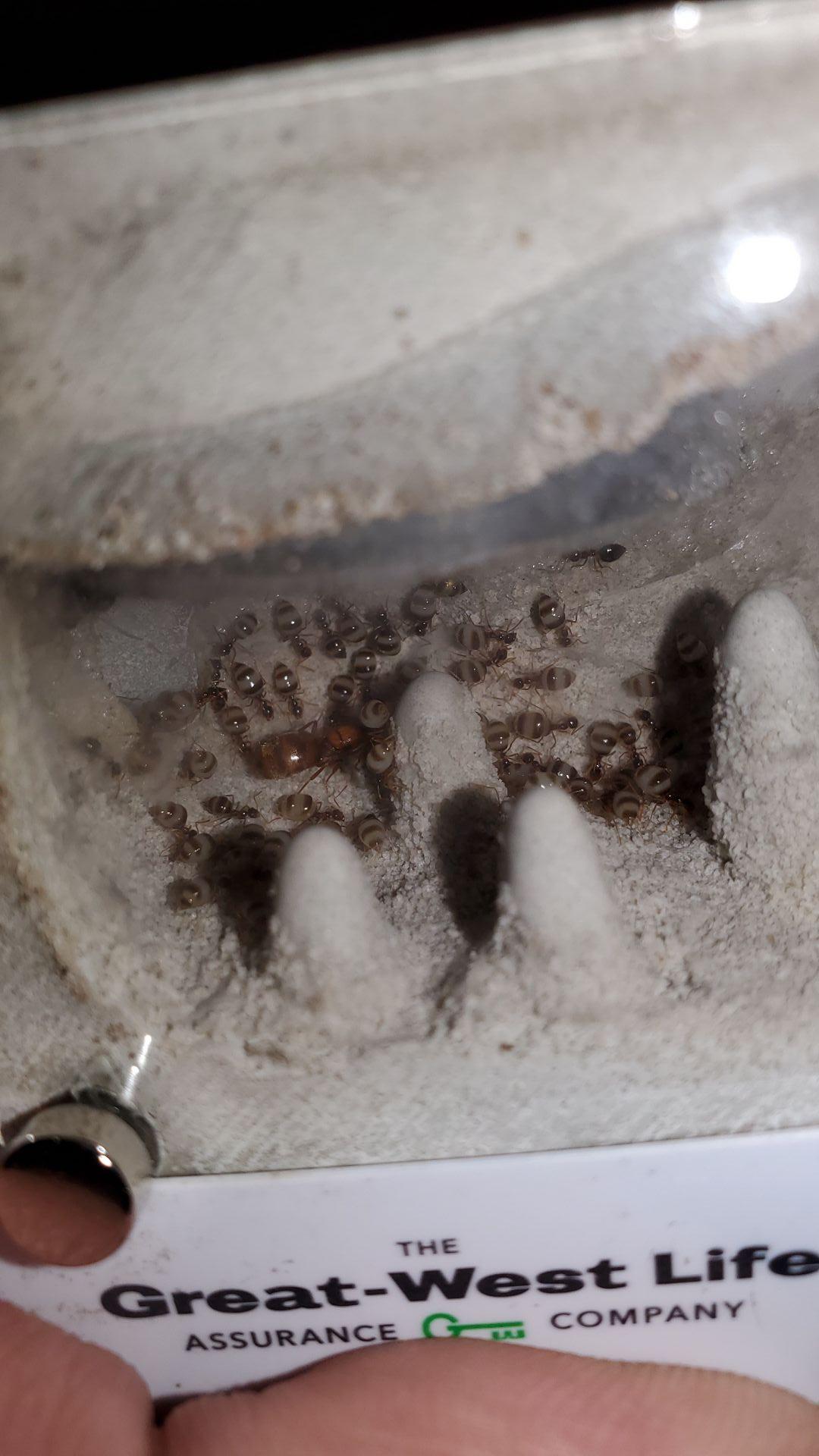
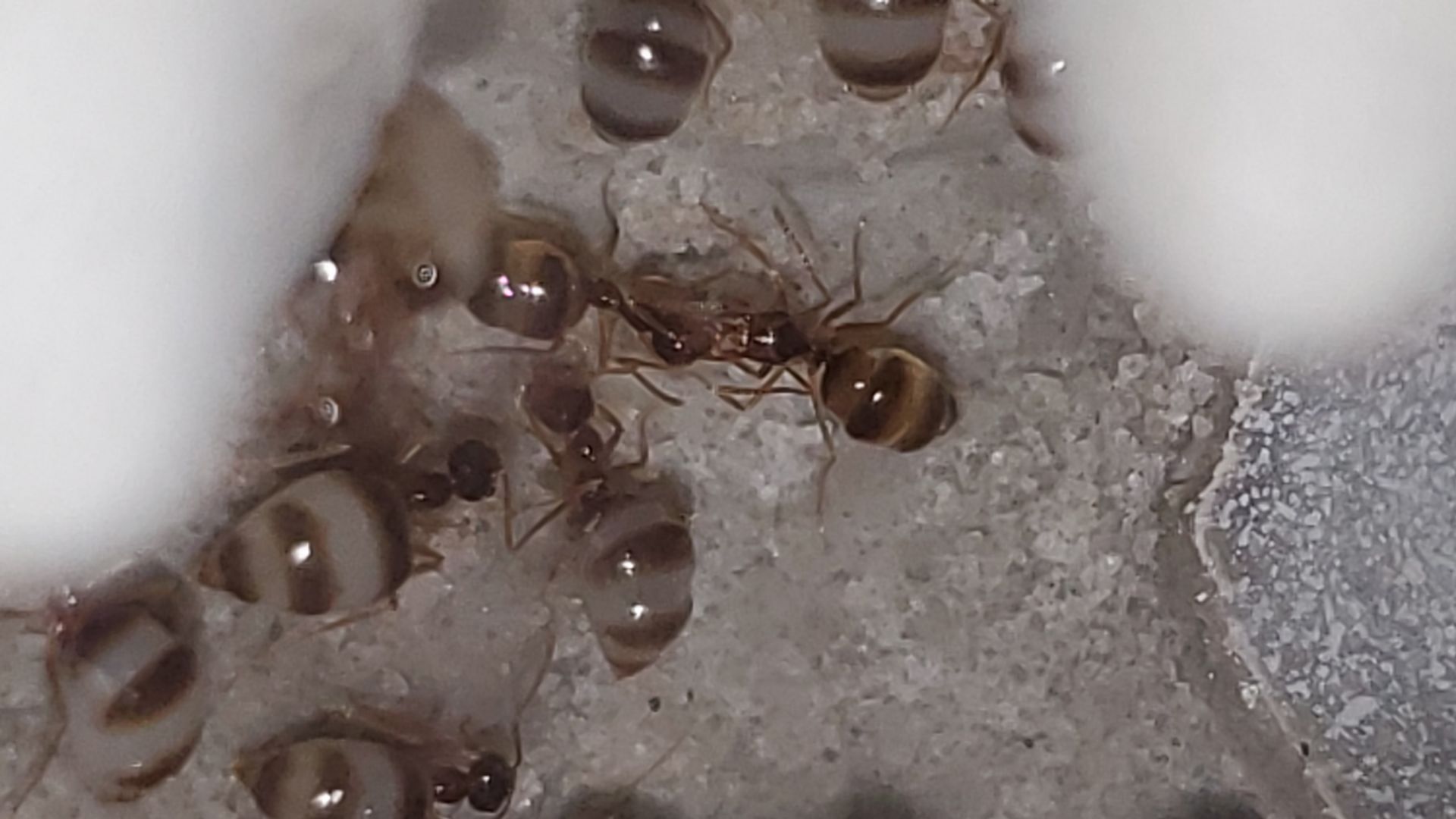
I should have also added that it looks like the two ants that are feeding each other are carrying the Sunburst Ant Nector i have been feeding them. Looks like they are sharing sugars since they are scrambling cause of all the light while viewing.
I probably couldn't keep these gals, but love their repletes!
There is a important time for everything, important place for everyone, an important person for everybody, and an important ant for each and every ant keeper and myrmecologist alike
I would love to try, if I could find any. ![]()
"God made..... all the creatures that move along the ground according to their kinds (including ants). And God saw that it was good. Genesis 1:25 NIV version
Keeping:
Tetramorium immigrans Camponotus vicinus, modoc, novaeboracensis, herculeanus
Formica pallidefulva, argentea Solenopsis molesta
Formica cf. aserva Lasius brevicornis, neoniger
Question:
Does anyone have any records of P.Imparis in their third year (including the nuptial flight year)? I sort of want to know what to expect in terms of egg production during this estivation season.
This colony is about to start the process of estivation. I have covered their nest entrance partially with a 16mm liquid ant feeder, so they can still get out. I will likely leave this here and maybe place some clay so that they can comfortably try and close it off on their own. If they don't then ill just take the clay out. I am really curious how fast this colony will grow.
0 members, 1 guests, 0 anonymous users